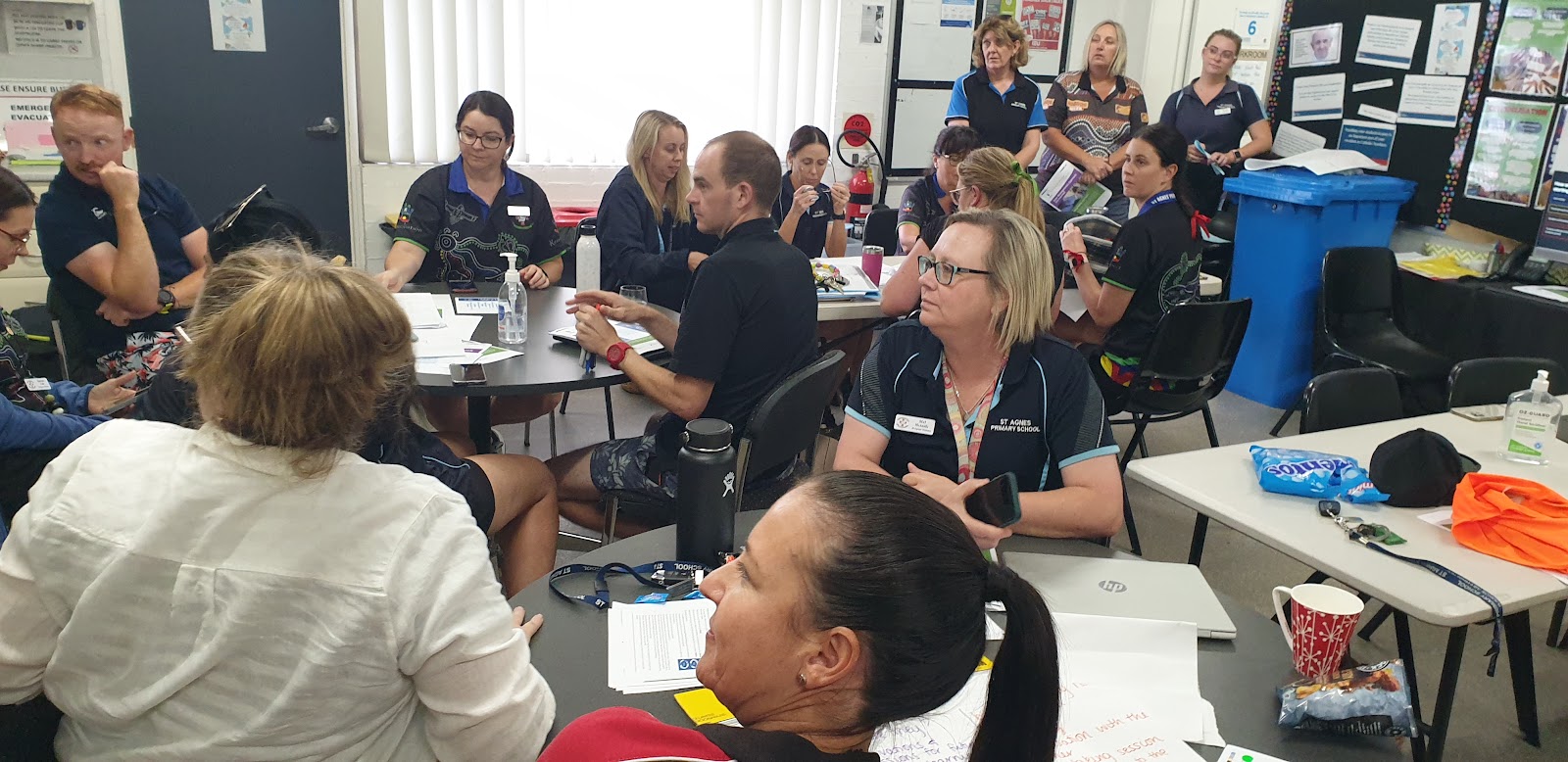Exploring Comparative Judgement: Professional Learning in Term 4
This term, staff engaged in professional learning focused on comparative judgement – a dynamic and insightful approach to assessing student work. Comparative judgement involves evaluating pairs of student work samples side by side to determine which one is stronger, rather than assigning an absolute score. By repeating this process across multiple pairings, a rank order is created, reflecting the relative quality of all samples. This method not only encourages consistency in assessment but also fosters reflective practice among educators.
Unpacking the Process
The sessions began by immersing staff in the theoretical underpinnings of comparative judgement. Teachers explored its applications and benefits, such as reducing bias, improving reliability, and promoting collaborative assessment. Staff also practiced applying the method to anonymized work samples, refining their ability to focus on criteria and evidence rather than preconceived expectations.
Reflective Questions
Throughout the professional learning, staff reflected on a series of key questions to deepen their understanding and align their practices:
How do the norms in the document compare with your PLT norms? Reflection revealed that many of the norms outlined in the comparative judgement framework resonated with existing Professional Learning Team (PLT) practices. Teachers discussed how integrating these norms could further strengthen their collaborative assessment practices.
What protocols do you presently use for comparative judgement or moderation? Staff shared a range of moderation strategies currently in place, such as calibration sessions, use of rubrics, and group discussions to achieve consensus. Comparative judgement was seen as a complementary approach, offering a fresh perspective that could streamline moderation and enhance the clarity of outcomes.
What do you agree to as your process moving forward with your data wall? The professional learning prompted rich discussions about the role of the data wall in tracking student progress. Staff agreed to adopt comparative judgement as part of their process, ensuring that the data wall reflects nuanced and reliable insights. Clear steps were outlined, including regular moderation cycles and the integration of comparative judgement outcomes into goal-setting discussions.
How does the assessment moderation process filter into your classroom practices? Teachers recognized that robust moderation practices, including comparative judgement, have a direct impact on classroom instruction. By aligning assessment practices with learning objectives, teachers can provide more targeted feedback and support. Comparative judgement was seen as a tool to enhance this alignment, fostering greater transparency and student engagement in the assessment process.
Staff conducted a comparative judgment exercise using two work samples. However, it was later realized that both samples came from the same student. This prompted a discussion about the types of work samples best suited for a data wall, focusing on whether cold writes (unprepared, spontaneous work) or warm writes (prepared, polished work) are more effective. The team explored the benefits of each:
- Cold writes provide insight into a student’s raw skills and independent thinking under spontaneous conditions. This indicates whether fundamental skills have transferred to mastery.
- Warm writes showcase how students improve with guidance, feedback, and time, highlighting growth over a learning period.
This reflection will help refine the choice of samples to ensure fairness and clarity in future evaluations.
Moving Forward
As Term 4 draws to a close, staff are committed to embedding comparative judgement into their routines. This will involve:
Continuing to refine protocols through regular PLT discussions.
Building capacity through peer mentoring and collaborative practice.
Leveraging insights from comparative judgement to inform teaching and learning strategies.
This professional learning journey has not only enhanced our understanding of comparative judgement but also reinforced our collective commitment to high-quality assessment practices. By embracing this approach, we aim to ensure that every student’s work is evaluated with fairness, precision, and a shared commitment to excellence.












Comments
Post a Comment